 W
WMikołaj Abramowicz or Abrahamowicz (1590s—1651) was a Polish-Lithuanian soldier who was one of the leading military and diplomatic figures of his period.
 W
WKrzysztof Arciszewski was a Polish nobleman, military officer, engineer, and ethnographer. Arciszewski also served as a general of artillery for the Netherlands and Poland.
 W
WJohann Theodor Friedrich Avé-Lallemant was a German musician and music teacher.
 W
WFranciszek Ksawery Branicki was a Polish nobleman, magnate, French count, diplomat, politician, military commander, one of the leaders of the Targowica Confederation and a grand traitor who participated with the Russians in the dismemberment of his nation.
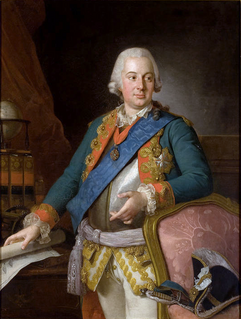 W
WAlois Friedrich von Brühl was a Polish-Saxon diplomat, politician, Freemason, soldier, actor and playwright.
 W
WHeinrich, count von Brühl, was a Polish-Saxon statesman at the court of Saxony and the Polish–Lithuanian Commonwealth and a member of the powerful German von Brühl family. The incumbency of this ambitious politician coincided with the decline of both states. Brühl was a skillful diplomat and cunning strategist, who managed to attain control over of Saxony and Poland, partly by controlling its king, Augustus III, who ultimately could only be accessed through Brühl himself.
 W
WPrince Adam Kazimierz Czartoryski was an influential Polish aristocrat, writer, literary and theater critic, linguist, traveller and statesman. He was a great patron of arts and a candidate for the Polish crown. He was educated in England and after his return to Poland in 1758, he became a member of the Sejm (parliament), Crown General of Podolia and Marshal of General Confederation of Kingdom of Poland.
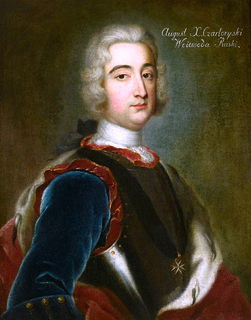 W
WPrince August Aleksander Czartoryski was a member of the Polish nobility, magnate. He is founder of the founder of the Czartoryski family fortune.
 W
WJan Henryk Dąbrowski was a Polish general and statesman, widely respected after his death for his patriotic attitude, and described as a national hero who spent his whole life restoring the legacy of Poland.
 W
WIgnacy Erazm Działyński (1754–1797) was a Polish nobleman (szlachcic) of Ogończyk coat of arms and a military officer, known for his participation in the Warsaw Uprising of 1794.
 W
WStanisław Kostka Gadomski de Rola (1718–1797) was a Polish nobleman and governor of the Łęczyca Province of Poland since 1787. He was also the Speaker of the Sejm, General officer of the Armed Forces in the Polish–Lithuanian Commonwealth and Starost of Krystynopol.
 W
WWincenty Aleksander Korwin Gosiewski de armis Ślepowron – was a Polish nobleman, general, Field-Commander of Lithuania from 1654, Grand Treasurer of Lithuania and Lithuanian Great-Quartermaster since 1652, General of Artillery of Lithuania from 1651, Grand-Master of the Pantry of Lithuania from 1646.
 W
WJan August Hiż was a Polish military officer, major general of the Poland's Crown Army.
 W
WJakub Krzysztof Jasiński of Rawicz Clan was a Polish general, and poet of Enlightenment. He participated in the War in Defence of the Constitution in 1792, was an enemy of the Targowica Confederation and organized an action against its supporters in Vilnius. He participated also in the Kościuszko Uprising, during the course of which he was killed in the Battle of Praga in 1794.
 W
WJoachim Daniel von Jauch was a German-born architect who supervised the baroque development of Warsaw in Poland.
 W
WFerdinand Kettler was the Duke of Courland and Semigallia from 1730 to 1737. He was married to Johanna Magdalene of Saxe-Weissenfels in 1730.
 W
WBaron Karol Otto Kniaziewicz was a Polish general and political activist.
 W
WAndrzej Tadeusz Bonawentura Kościuszko was a Polish-Lithuanian military engineer, statesman, and military leader who became a national hero in Poland, Lithuania, Belarus, and the United States. He fought in the Polish–Lithuanian Commonwealth's struggles against Russia and Prussia, and on the US side in the American Revolutionary War. As Supreme Commander of the Polish National Armed Forces, he led the 1794 Kościuszko Uprising.
 W
WIgnacy Czesław Łempicki was a Polish military officer, Major General of Poland's Crown Army, Royal Adjutant General, Official of the Military Commission.
 W
WDuke Ludwig Friedrich Alexander of Württemberg was the second son of Frederick II Eugene, Duke of Württemberg (1732–1797) and Margravine Sophia Dorothea of Brandenburg-Schwedt (1736–1798). His elder brother was Frederick I, the first King of Württemberg, and his sister was the Russian Empress consort, Maria Feodorovna. Louis retained the pre-royal title of Duke.
 W
WPrince Antoni Benedykt Konstanty Lubomirski (1718-1761) was a Polish szlachcic.
 W
WPrince Jerzy Dominik Lubomirski was a Polish noble (szlachcic).
 W
WPrince Jerzy Ignacy Lubomirski (1687–1753) was a Polish nobleman (szlachcic). Knight of the Order of the White Eagle, awarded on August 3, 1727.
 W
WJerzy Marcin Lubomirski – Bar Confederate, general officer of Polish Crown Army (1773), art patron, and diarist.
 W
WAntoni Madaliński (1739–1805) – Polish Lieutenant General, commander of 1st Greater Polish National Cavalry Brigade during Kościuszko Uprising.
 W
WAndrzej Mokronowski (1713–1784) was a notable member of the Polish szlachta, a politician and general of the Polish Army.
 W
WStanisław Mokronowski (1761-1821) was a prominent member of the Polish landed gentry of Bogoria coat of arms. A general of the Polish Army and a royal Chamberlain, Mokronowski took part in both the Polish–Russian War of 1792 and Kościuszko's Uprising of 1794.
 W
WFryderyk Józef Jan Kanty Moszyński of Nałęcz coat of arms was a noble (szlachcic) in the Polish–Lithuanian Commonwealth. He held the offices of Referendary of Lithuania, Great Secretary of Lithuania and Great Marshal of the Crown.
 W
WPrince Michał Kazimierz Ogiński of Oginiec was a Polish nobleman, a political office holder and a military commander in the Grand Duchy of Lithuania, as well as a noted musician and composer.
 W
WPiotr Ożarowski was a Polish noble (szlachcic), politic and military commander. Member of the infamous Confederation of Targowica, he reached the offices of Great Crown Hetman and castellan of Wojnice.
 W
WAlexander or Aleksander Polanowski entitled to use coat of arms Pobóg was colonel of the Royal Hussar, Royal Grand Master of the Pantry since 1678 and Royal Grand Standard Bearer since 1685. The Grand Standard Bearer of the Crown was the fourth in military commandership after the King, the "Hetman Wielki" and the “Hetman Polny”.
 W
WPrince Józef Antoni Poniatowski was a Polish general, minister of war and army chief, who became a Marshal of the French Empire during the Napoleonic Wars.
 W
WPrince Kazimierz Poniatowski was a Polish Szlachcic, podkomorzy wielki koronny (1742–1773), Lieutenant general of the Royal Polish forces, generał wojsk koronnych. Knight of the Order of the White Eagle, awarded on 3 August 1744 in Warsaw.
 W
WStanisław Poniatowski was a Polish military commander, diplomat, and noble. Throughout his career, Poniatowski served in various military offices, and was a general in both the Swedish and Polish–Lithuanian militaries. He also held numerous civil positions, including those of podstoli of Lithuania and Grand Treasurer of the Lithuanian army in 1722, voivode of the Masovian Voivodeship in 1731, regimentarz of the Crown Army in 1728, and castellan of Kraków in 1752. Throughout his lifetime, he served in many starost positions.
 W
WCount Stanisław Kostka Potocki was a Polish noble, politician, writer, public intellectual and patron of the arts.
 W
WCount Stanisław Szczęsny Feliks Potocki, of the Piława coat of arms, known as Szczęsny Potocki was a member of the Polish szlachta and a military commander of the forces of the Polish–Lithuanian Commonwealth and then Poland. Knight of the Order of the White Eagle, awarded in August 1775.
Bogusław Radziwiłł was a Polish princely magnate and a member of the Polish-Lithuanian szlachta, or nobility. He was of the Radziwiłł magnate family. By birth he was an Imperial Prince of the Holy Roman Empire. He was a descendant of the famous knight Zawisza Czarny.
 W
WPrince Karol Stanisław Radziwiłł was a Polish nobleman, politician, diplomat, prince of the Crown Kingdom of Poland and the Commonwealth, statesman of the Grand Duchy of Lithuania, Voivode of Vilnius, governor of Lwów and Sejm Marshal between 1767 and 1768. He is frequently referred to by his well-known sobriquet "Panie Kochanku" to distinguish him from his earlier namesake.
 W
WStanisław Ferdynant Rzewuski (1737–1786) was a Polish noble (szlachcic). Knight of the Order of the White Eagle, awarded on 1760.
 W
WStanisław Mateusz Rzewuski (1662–1728) was a Polish nobleman (szlachcic).
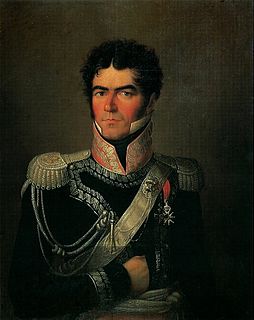 W
WPrince Eustachy Erazm Sanguszko (1768–1844) was a Polish nobleman, general, military commander, diplomat and politician.
 W
WAleksander Michał Paweł Sapieha of Lis coat of arms was a noble of the Polish–Lithuanian Commonwealth.
 W
WPrince Kazimierz Nestor Sapieha (1757–1798) was a Polish-Lithuanian noble (szlachcic) and one the creators of the 3 May Constitution.
 W
WLeon Bazyli Sapieha was a Polish-Lithuanian politician. He was the treasurer of the Lithuanian court and Lithuanian army general and member of the noble Sapieha family. He was the son of Paweł Jan Sapieha and brother to Jan Kazimierz Sapieha the Younger, amongst many other siblings.
 W
WMichał Franciszek Sapieha was a Polish-Lithuanian magnate of the Sapieha family, Koniuszy of Lithuania, and a general of Lithuanian and Russian armies.
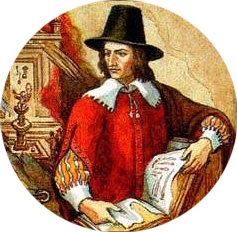 W
WKazimierz Siemienowicz was a general of artillery, gunsmith, military engineer, and one of pioneers of rocketry. Born in the Raseiniai region of the Grand Duchy of Lithuania, he served in the armies of the Polish–Lithuanian Commonwealth and of Frederick Henry, Prince of Orange, the ruler of the Netherlands. No portrait or detailed biography of him has survived and much of his life is a subject of dispute.
Michał Sokolnicki was a Polish nobleman, general, military engineer, politician, and writer.
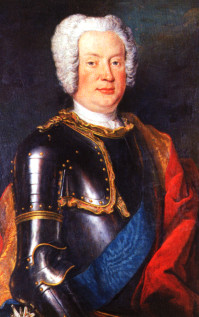 W
WAlexander Joseph Sulkowski was a Saxon-Polish general and the progenitor of the Sułkowski noble line.
 W
WJan Tarło (1684–1750) was a Polish nobleman (szlachcic)
 W
WTomasz Antoni Wawrzecki (1753–1816) was a distinguished Polish politician and military commander, a general of the Polish Army. During Kościuszko's Uprising in Warsaw he succeeded Tadeusz Kościuszko as the commander of the Polish forces. His surrender to the Russian troops on 16 November 1794 marked the effective end of the uprising.
 W
WPrince Józef Zajączek was a Polish general and politician.
 W
WStanisław Zawadzki (1743–1806) was a Polish architect, representative of late-baroque and classicism, inclined towards Palladian architecture and precursor of the empire style in Polish architecture, Major General of the Army of Polish–Lithuanian Commonwealth.